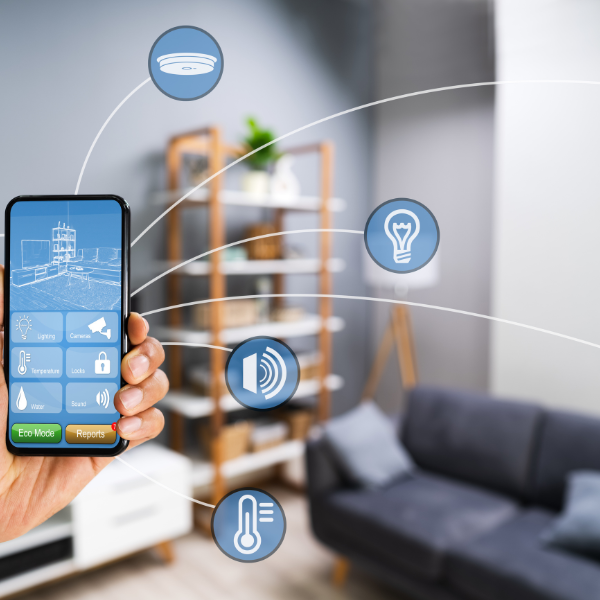
Once exclusively reserved for high-end homes, smart home technology has taken the real estate market by storm in recent years. Homeowners at all levels are increasingly incorporating smart home technologies into their homes — and they’re reaping financial benefits. Here’s how to get started.
What are Smart Homes?
Smart homes are properties that have been equipped with technology that automates everyday functions like lighting, temperature control, security systems, and even food storage. Homeowners (or tenants) can access and control most of these features from their smartphones, even when they’re not at home.
While some properties are designed from the ground up to incorporate smart home technology, any house can be converted into a smart home by upgrading older appliances with newer “smart technology” enabled upgrades.
There’s a smart version of just about every appliance in a home, from refrigerators, washers, and dryers to HVAC systems, watering systems, thermostats, security alarms, lighting, smoke detectors, and thermostats.
The Financial Benefits of Smart Homes
One of the most significant financial benefits of smart homes is lower energy costs. Smart home devices, such as smart thermostats, enable homeowners to monitor and control their energy usage, reducing their monthly energy bills. For example, a smart thermostat can learn a homeowner’s habits and automatically adjust the temperature to save energy when they’re not at home. Additionally, smart homes allow homeowners to monitor their energy usage in real-time, giving them insight into how they can make further savings.
For rental property owners, installing smart home features can make a listing feel more premium — which translates to higher rent. The enhanced security features from smart home alarm systems can also help bring peace of mind to property owners and tenants alike.
For real estate investors and homeowners looking to sell, installing smart home features can increase a property’s value. Appraisers will make positive adjustments when they compare smart homes to similar homes without smart technology, resulting in higher valuations for tech-enabled homes.
The Cost of Incorporating Smart Home Technology
The most significant barrier to entry for smart homes is the up-front cost of equipment and installation. Luckily, a home doesn’t have to have every possible smart device to be considered a smart home. Homeowners have the flexibility to choose what features they want to add, and they can start with a few basic devices and gradually build up the automation level over time.
Maximize Smart Home ROI
Incorporating smart home technology does come with a cost, but the long-term financial benefits often outweigh the initial expenses. Start by prioritizing smart technology upgrades that offer the most tangible return on investment.
For homeowners looking to upgrade, this will mean prioritizing smart systems that promote more efficient energy consumption. Focus on HVAC systems — or just the thermostat to start — along with outdoor plant sensors and watering systems for maximum utility bill savings. Smart lighting is also a huge energy saver. Smart plugs are another great place to start. Any device can be plugged into a smart plug and then controlled remotely with an app or even set on an automated schedule.
For property owners looking to sell, or for landlords, focus on smart home devices that bring the “wow” factor. Smart fridges, especially the newer models that digitally display the food stored inside, can elevate a normal kitchen into a high end marvel of modern technology. Plus, any of the energy-efficient smart technologies mentioned above can also be used as a selling point — everybody loves conserving energy and being green.
Conclusion
Smart home technology is here to stay. For homeowners, landlords, prospective buyers, and real estate investors, it’s crucial to have an understanding of smart home technology in order to make informed decisions that can save money, increase property value, and improve overall quality of life. Whether it’s a few well-placed upgrades or a full-scale automation effort, any property can be considered a smart home — and anyone can capitalize on this rapidly-growing trend.

